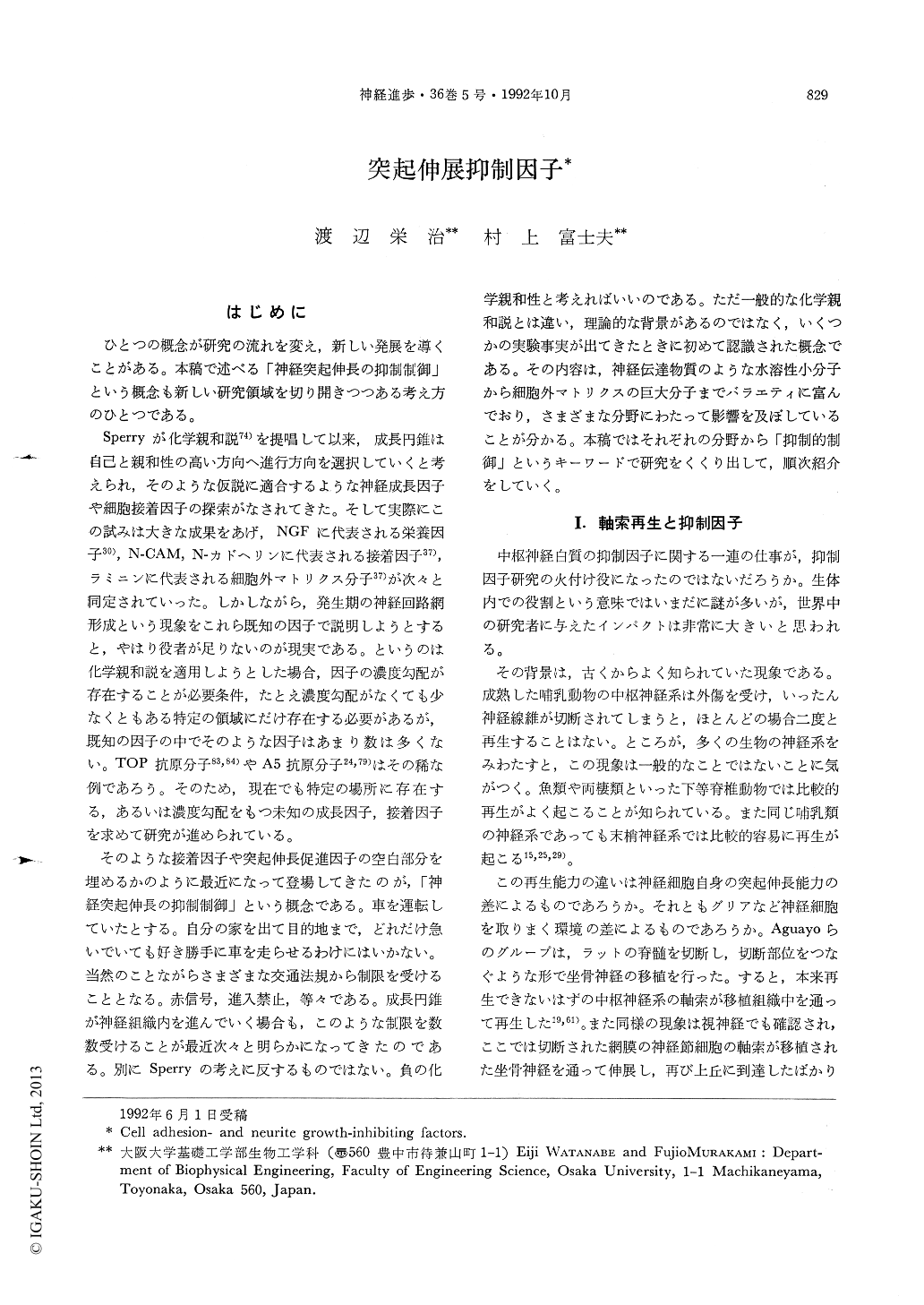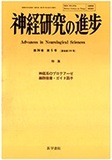Japanese
English
- 有料閲覧
- Abstract 文献概要
- 1ページ目 Look Inside
はじめに
ひとつの概念が研究の流れを変え,新しい発展を導くことがある。本稿で述べる「神経突起伸長の抑制制御」という概念も新しい研究領域を切り開きつつある考え方のひとつである。
Sperryが化学親和説74)を提唱して以来,成長円錐は自己と親和性の高い方向へ進行方向を選択していくと考えられ,そのような仮説に適合するような神経成長因子や細胞接着因子の探索がなされてきた。そして実際にこの試みは大きな成果をあげ,NGFに代表される栄養因子30),N-CAM,N-カドヘリンに代表される接着因子37),ラミニンに代表される細胞外マトリクス分子37)が次々と同定されていった。しかしながら,発生期の神経回路網形成という現象をこれら既知の因子で説明しようとすると,やはり役者が足りないのが現実である。というのは化学親和説を適用しようとした場合,因子の濃度勾配が存在することが必要条件,たとえ濃度勾配がなくても少なくともある特定の領域にだけ存在する必要があるが,既知の因子の中でそのような因子はあまり数は多くない。TOP抗原分子83,84)やA5抗原分子24,79)はその稀な例であろう。そのため,現在でも特定の場所に存在する,あるいは濃度勾配をもつ未知の成長因子,接着因子を求めて研究が進められている。
Cell-cell and cell-substratum interactions play an important role in the development and regeneration of the nervous systems. Recent studies suggest that molecules inhibitory to the interactions are involved in addition to those promoting cell adhesion or neurite outgrowth.
(1) INHIBITION AND REGENERATION OF CNS AXONS.
In mature mammalian CNS, axons usually fail to regenerate after injury, while in the PNS theyoften succeed in reinnervating their targets. The observation that central neurons grow into peripheral nerve tissues suggests that environment in the CNS is responsible for the lack of regeneration. To study the interaction between neurons and substrate for CNS, we cultured chick neocortical neurons on the cryostat tissue sections of the CNS and found that the cells preferentially adhered to the white matter ; this was ascribed to non-permissiveness of the white matter tissue, as the neurons failed to adhere to a mixture of gray and white matter. Caroni and Schwab found two membrane proteins of molecular weights 35 KD and 250 kD which perturb cell adhesion and neurite outgrowth. A monoclonal antibody raised against them, IN-1, abolished their activity. J1-160/180 which are extracellular-matrix glycoproteins produced by oligodendrocytes, also inhibit cell adhesion. These inhibitory molecules in the CNS white matter may explain, at least partially, the lack of axonal regeneration in the CNS of higher vertebrates.

Copyright © 1992, Igaku-Shoin Ltd. All rights reserved.


